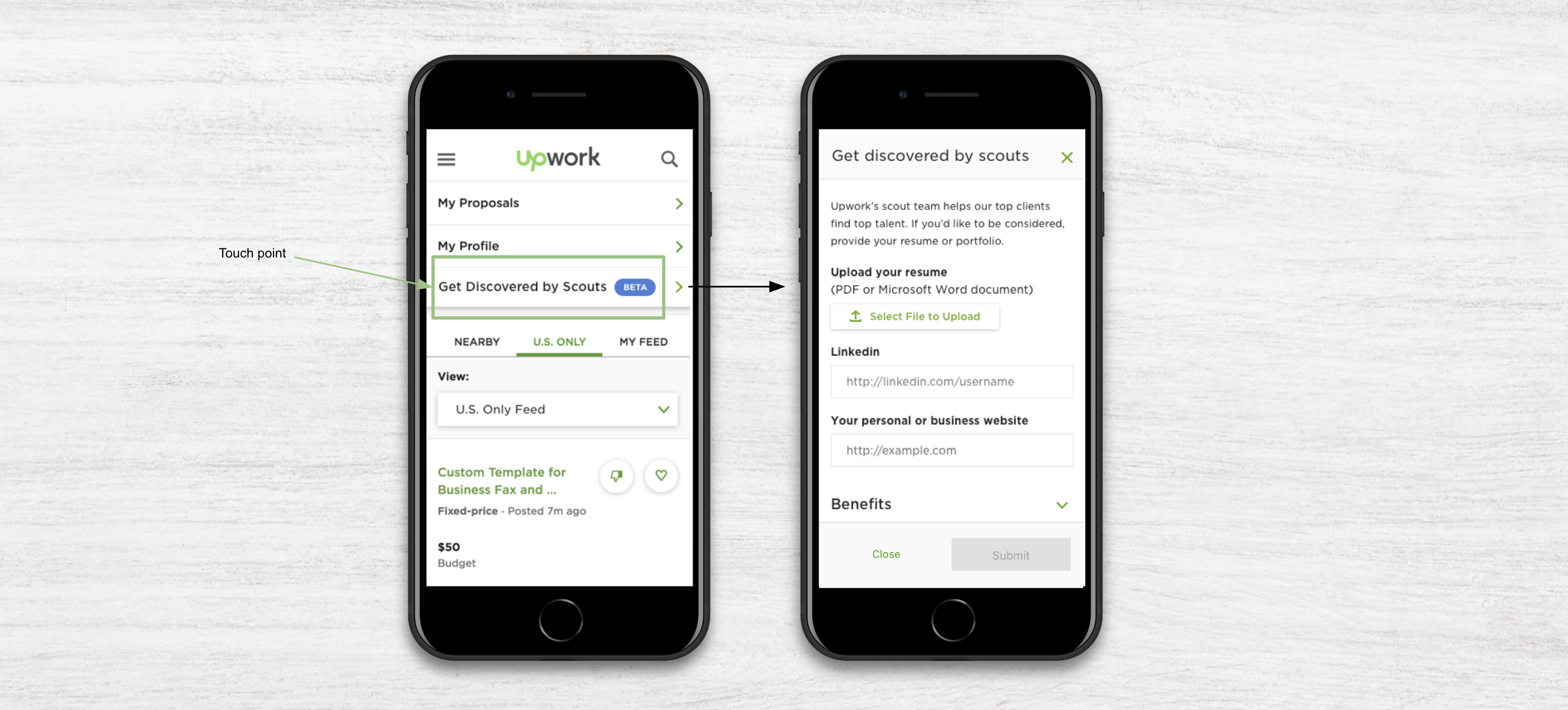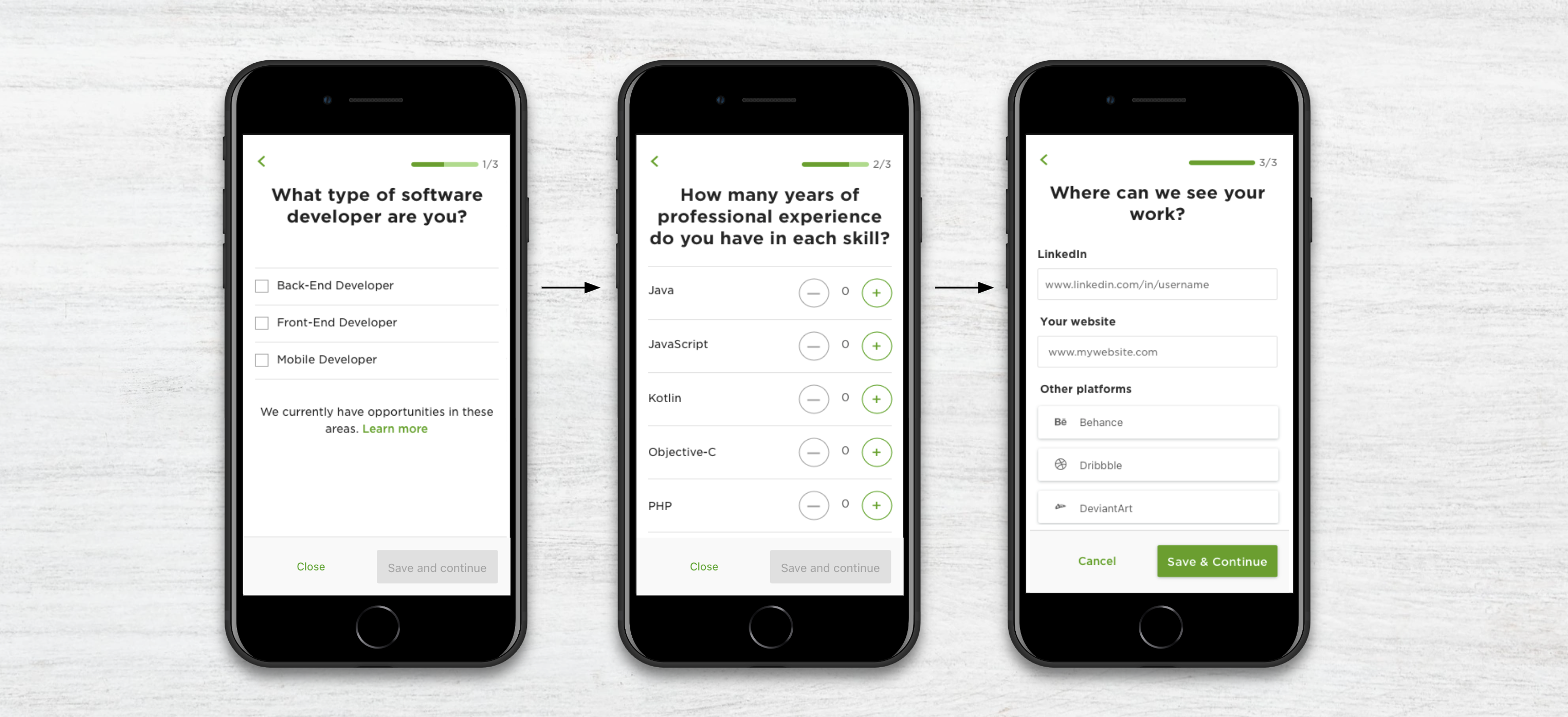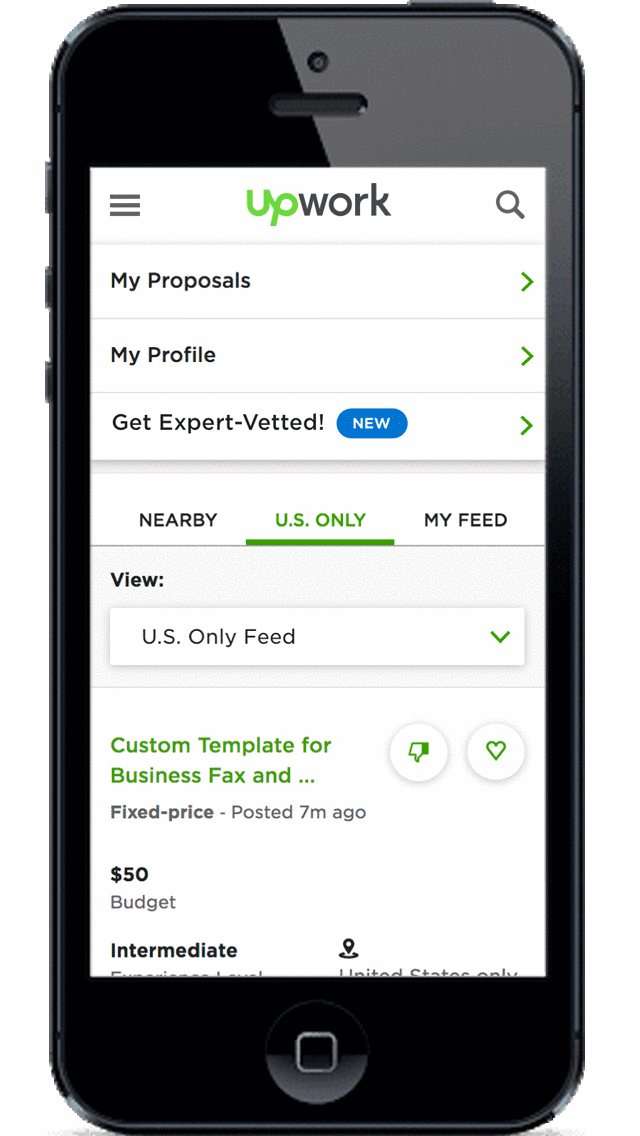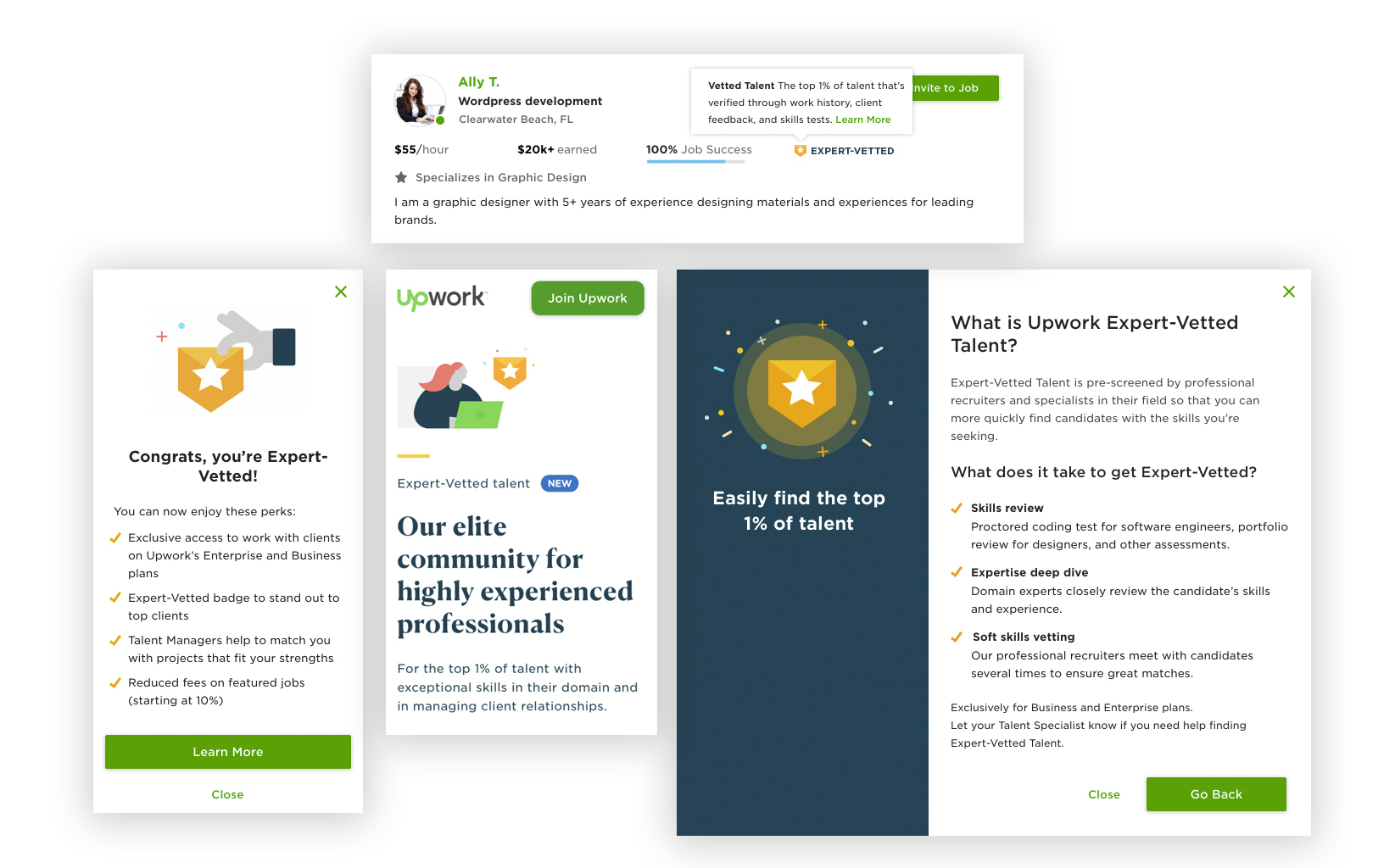Upwork is a global freelancing platform where businesses and independent professionals connect and collaborate remotely.
Off-platform Reputation
Problem 1: Upwork has no signals to identify new talent with strong experience off of Upwork.
I’m a new talent on Upwork with a lot of proven experience on other sites, but the problem is, because I’m new to Upwork I’m not considered high-quality since they don’t recognize my experience. This is frustrating, because it makes it even harder to find high-value jobs if no one knows what I’m capable of.
Problem 2: Upwork’s Talent Managers have a hard time searching and onboarding high quality talent at scale.
I’m a Talent Manager that searches for high-quality talent on our platform, by looking for signals (L3s, years of experience in skills ect..) that will allow me to help them go through our vetting process. The problem is, I can’t do this at scale.This is very frustrating for the potential high-quality talent, because the process takes too long.
Step 1:
Understand the Talent Manager’s process for finding and vetting talent, to locate their pain points. Step 2:
Step 2:
Take their process and simplify it into an intuitive user-centric flow, so freelancers can manually input their data.
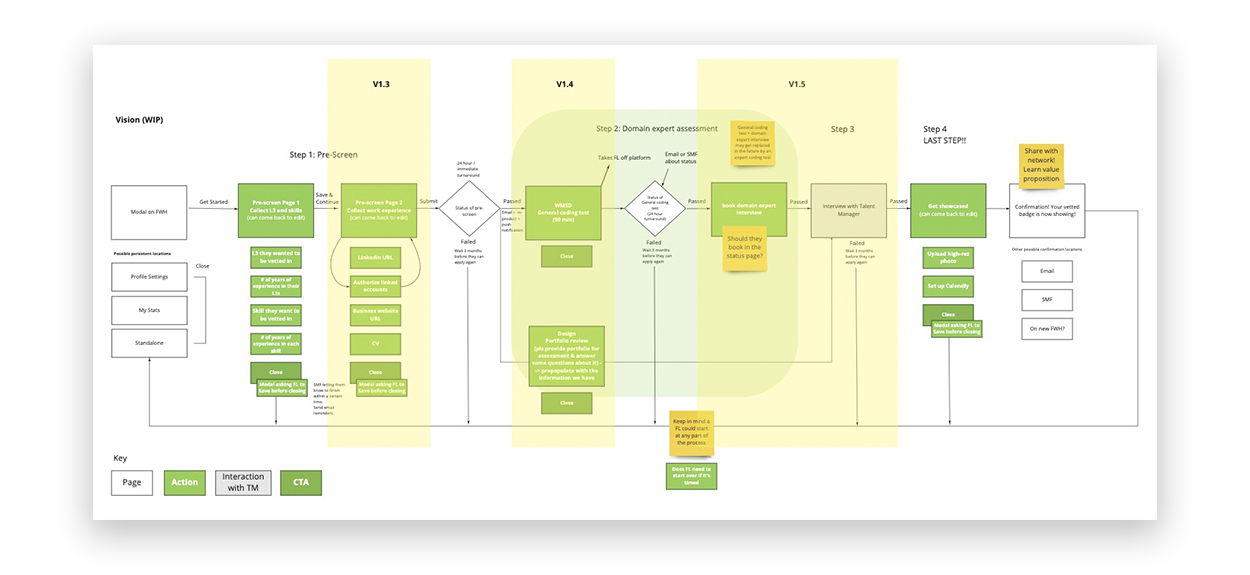
Step 3:
Qualitative research showed what data high-value clients wanted to see from experienced freelancers, so I iterated low-fidelity wireframes to do quantitative research on freelancers to see if they saw value in going through this flow to be more visible to high-value clients.
Step 4: Solution
The solution was to find a way for high-quality talent to show us there experience off of Upwork’s platform, and pre-screen them to go through our assessment process so our Talent Managers can fast-track them to become Expert-Vetted. I designed an MVP with a front door in job search for freelancers to enter their minimal off-platform work experience as a demand test.
Step 5:
Once we met our goal of quantity of users engaging, we added more ways for freelancers to provide their experience by entering their years of experience within each skillset, and add more integration with other apps.
Step 6: The final deliverable and impact
This experience helped increase the hiring rate of high-quality freelancers from 4.2% to 23%.
New Expert-Vetted Badge
Problem 1: There is no way for high-value clients to find the top 1% of talent who have been vetted and assessed on Upwork, without having to go through a Talent Manager.
Problem 2: High quality talent on Upwork do not feel like they have an edge over talent with less experience. Talent with less experience that want to be successful on Upwork, find it difficult to achieve a path to success.
My Part: In addition to designing a new badging system, I also designed this Expert-Vetted badge from research to prototyping, working with PM, Engineers, Design Systems team, and copywriter.
Research: We interviewed 6 enterprise clients that use Upwork, and 6 enterprise clients that do not use Upwork to understand what kind of vetting is most valuable to them, and what their process is when looking for high-value talent. We also presented many different variants of this badge, to see which one resonated the most.
The result: After a 30 day test, we saw an increase in the percentage of treatment users who made a hire with the Expert-Vetted badge, so we rolled it out at 100%. Since then, our hire rate has continued to go up among high-value clients seeking high quality freelancers.
Our freelancers are happy too…..
Better Budget Signaling
Problem: As a client that’s posting a job, i see that the budget section is directly linked to the expertise level. Because of this, it’s difficult to make tradeoffs between dollar amounts and the expertise needed for a particular job, because it’s so ambiguous.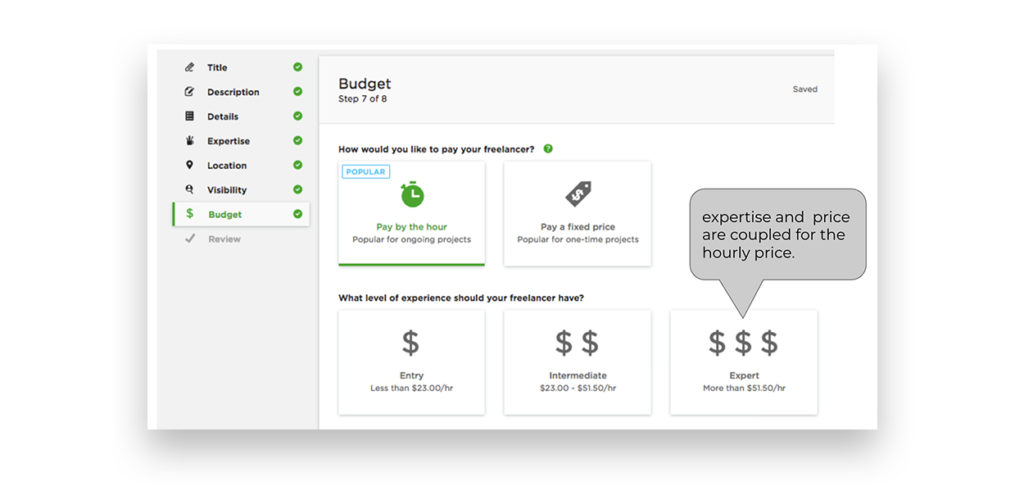 UX Challenge: Provide better rate guidance to clients, so they can make a more informed decision between their budget and the experience level they’re looking for.
UX Challenge: Provide better rate guidance to clients, so they can make a more informed decision between their budget and the experience level they’re looking for.
Research: In past research, we saw that clients often start with a rate in mind, but make tradeoffs in price when presented a freelancer with the right skills and experience, after they posted a job. This lead us to the hypothesis that we need to do a better job informing the client before posting a job, to get the best results.
For this project we asked 10 hiring managers (5users, 5 non-users) some key questions:
• What is their process and expectations when deciding an hourly range?
• How well do they understand the expertise tiers?
• Do they understand that the specific inputs cause the suggested range to go up and down?
• How helpful is a suggested price range?
After distilling the research, we concluded that clients wanted more guidance and autonomy when choosing a budget. So we did usability testing on this design that showed a histogram that suggested an hourly range based on their previous inputs, with handles to give them complete control, as well as tabs to toggle between each expertise tier.
8 out of 10 users didn’t know that the graph changed, when they tapped through the tabs, and 8 out of 10 users did notice the dynamic fields below the graph change.
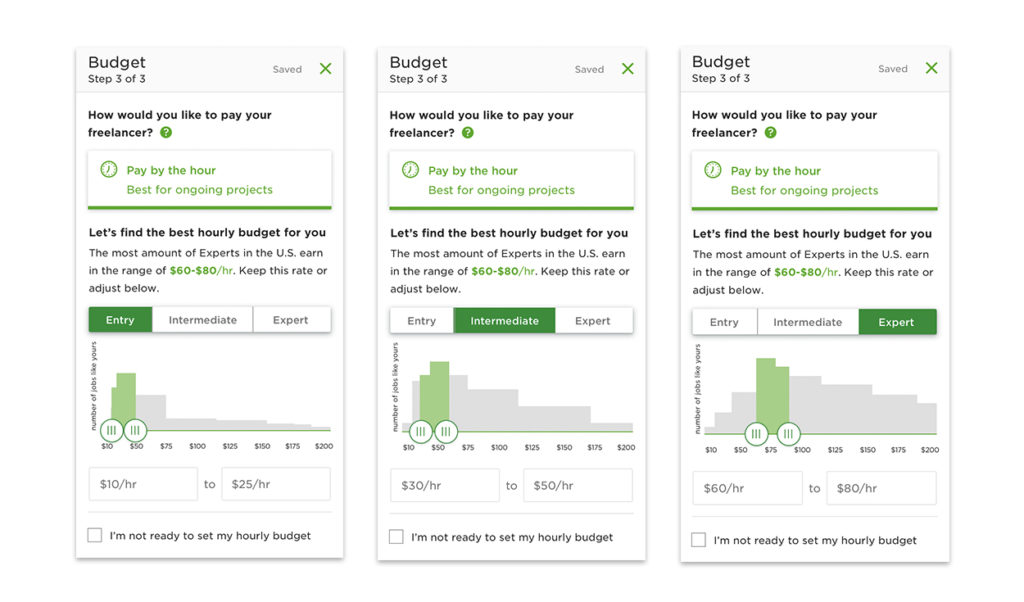
So we went back to the white board and simplified things a bit, by eliminating all of the functionality, and separate each section. Once we felt confident in the moderated testing, we switched to non-moderated to confirm this was the best solution.
The result after a 60-day A/B test was a 8% lift in invitation acceptance rate, 10% lift in spend per job, and 15% lift in fill rate. : )
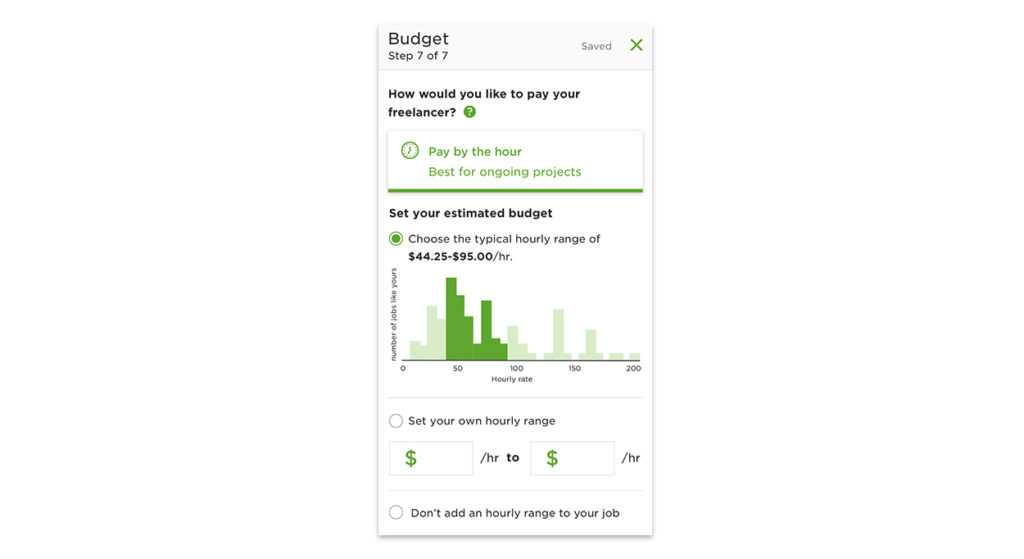
My Part: Designed the end-to-end experience from research and usability testing to prototyping, working with PM and Engineers.
Result: First Job Post (which is a very big metric went up 9%, and client spend went up 5%. This was initially rolled out in the U.S., but because of its success, we are rolling it out globally and using the histogram in other parts of our product.

